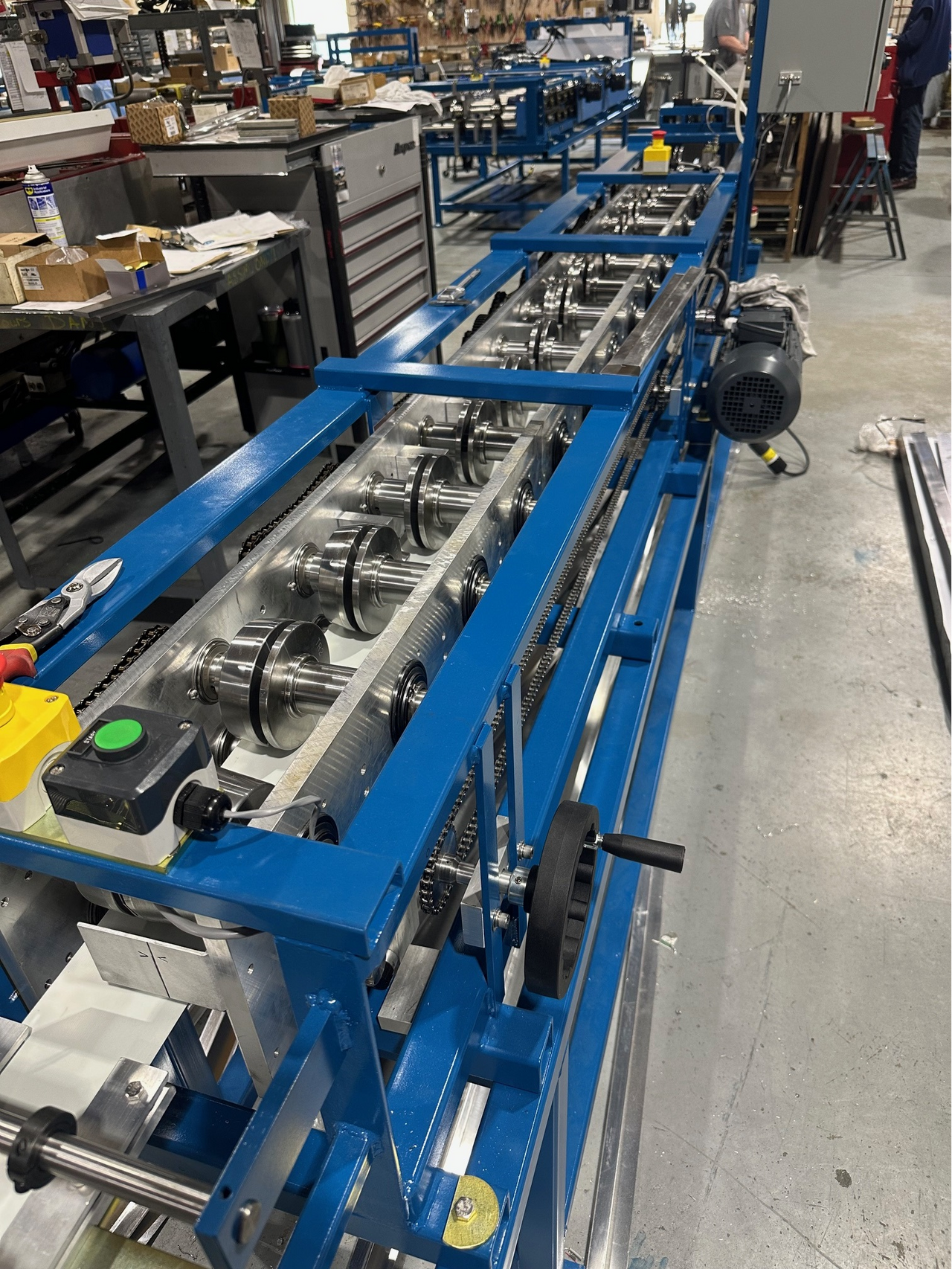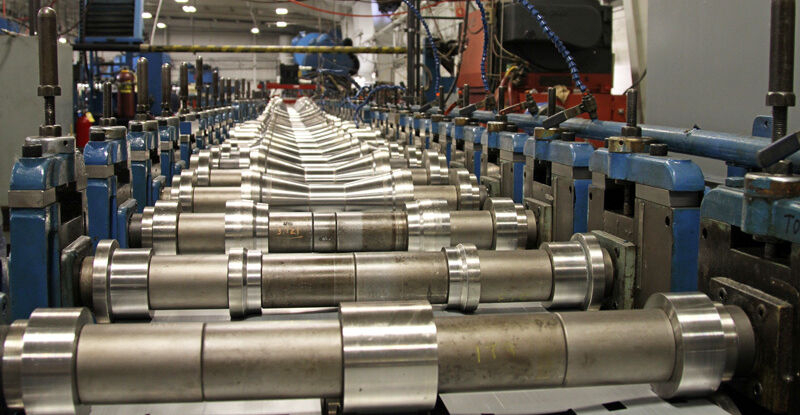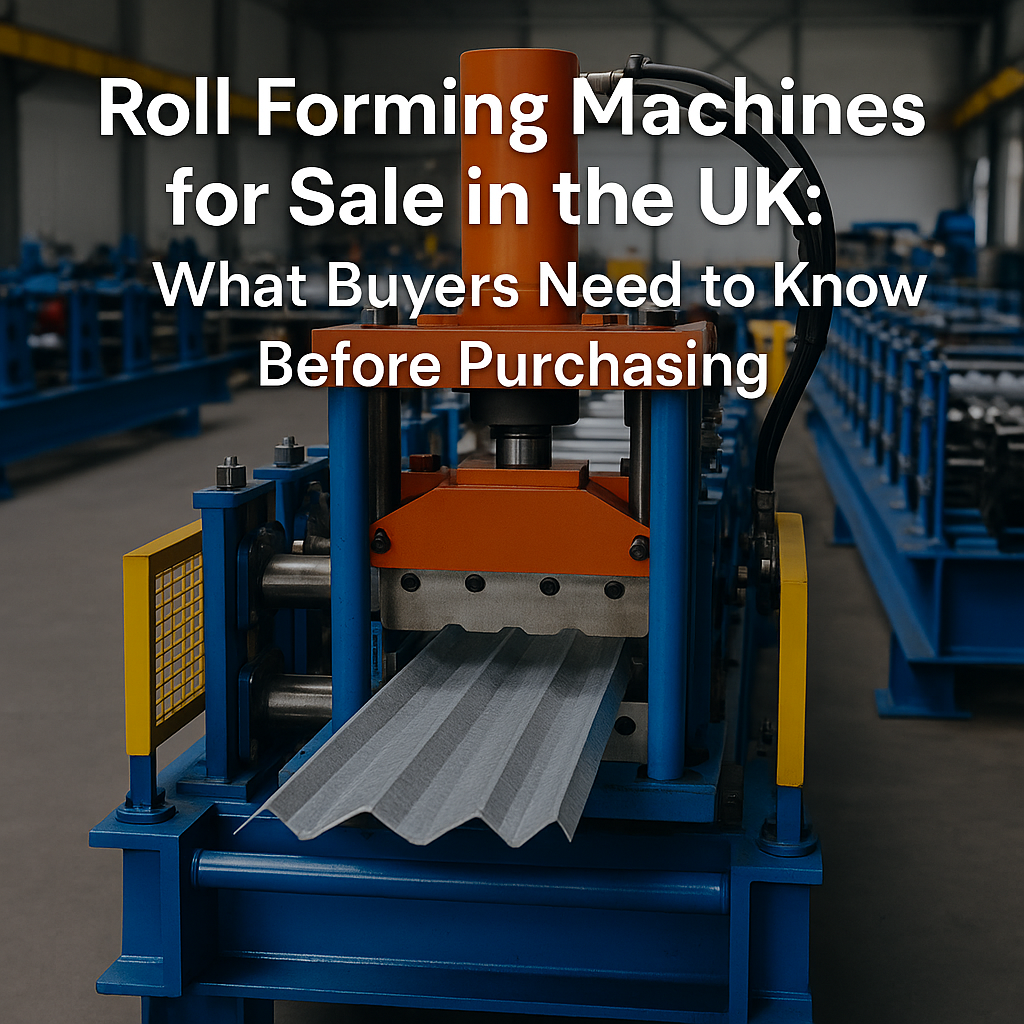The electrical cabinet for a roll forming machine plays a critical role in controlling the machine's operation, ensuring safety, and maintaining the machine's efficiency.
The electrical cabinet for a roll forming machine plays a critical role in controlling the machine's operation, ensuring safety, and maintaining the machine's efficiency. Here are some essential requirements for a roll forming machine's electrical cabinet:
1. Proper Enclosure Rating
- NEMA/IP Rating: The cabinet must have an appropriate NEMA (National Electrical Manufacturers Association) or IP (Ingress Protection) rating depending on the environment. For industrial settings, a NEMA 12 or IP55 cabinet is often used to protect against dust, oil, and non-corrosive liquids. In outdoor settings, a NEMA 4 or IP66 rating may be necessary for weatherproof protection.
2. Safety Features
- Emergency Stop (E-Stop): The electrical cabinet should include an easily accessible E-Stop button to immediately halt machine operation in case of an emergency.
- Lockout/Tagout (LOTO): Safety interlocks and provisions for lockout/tagout systems should be in place to prevent accidental machine start-ups during maintenance.
- Overload Protection: The cabinet should include circuit breakers or fuses to protect against overcurrent or short circuits.
3. Power Supply and Distribution
- Voltage and Frequency: The electrical cabinet should be designed to handle the required voltage (e.g., 380V, 480V) and frequency (e.g., 50Hz or 60Hz) based on the roll forming machine's location and power requirements.
- Power Distribution: Power distribution blocks or busbars should distribute power to various components like motors, PLCs (Programmable Logic Controllers), and other control elements efficiently.
4. Control Systems
- PLC and HMI Integration: The cabinet should house the PLC (Programmable Logic Controller) and HMI (Human-Machine Interface) for controlling machine sequences, automation, and process adjustments. These systems enable real-time monitoring and diagnostics.
- Variable Frequency Drives (VFDs): If the roll forming machine uses variable-speed motors, the electrical cabinet should include VFDs to control motor speeds and reduce energy consumption.
- Sensors and Feedback Loops: Integration of sensors (e.g., for speed, pressure, or alignment) ensures the machine operates efficiently, with feedback loops connected to the PLC for real-time adjustments.
5. Wiring and Cable Management
- Industrial-Grade Wiring: Use high-quality, heat-resistant, and wear-resistant wiring to handle the electrical load and environmental conditions.
- Cable Management Systems: Include appropriate cable ducts, raceways, and strain reliefs to ensure proper organization and safety.
6. Cooling and Ventilation
- Thermal Management: Roll forming machines generate heat, so the electrical cabinet should have proper ventilation or active cooling, such as fans or air conditioning units (A/C), to maintain an optimal temperature for the components.
- Heat Dissipation: Heatsinks or heat exchangers can be used to dissipate excess heat from critical components like the VFDs.
7. Grounding and Bonding
- Proper Grounding: Ensure that the electrical cabinet and all internal components are properly grounded to prevent electrical shock or damage due to stray voltage.
- Surge Protection: Install surge protection devices to safeguard against voltage spikes or surges from the power supply.
8. Compliance with Standards
- The electrical cabinet should comply with applicable electrical codes and standards, such as NFPA 79 (Electrical Standard for Industrial Machinery) or IEC 60204-1 (Safety of Machinery – Electrical Equipment of Machines).
- CE Marking for European machines, or UL/cUL certification for North American machines, ensures the cabinet meets safety and performance standards.
These requirements ensure that the electrical cabinet for a roll forming machine provides reliable, safe, and efficient operation. Properly designed cabinets also extend the lifespan of electrical components and reduce downtime.




